 Ecclesiastes 7:12 |
The Moravian Church is
the oldest
active worldwide Protestant
Christian denomination, dating back to 1457 in Europe, first coming to
America in 1735 and
to North Carolina in 1753. The Moravian Church is
frequently
compared with the
Lutheran,
Methodist
and Presbyterian Churches in its doctrine and worship. The
Moravian Church has a Covenant Relationship or shares
full communion with the
The name "Moravian" started out as a nickname in eastern Germany in the 1720s when religious refugees from Moravia, fleeing the wrath of the Roman Catholic Church, sought refuge and protection at the estate of the wealthy Saxon nobleman, Count Nicholas von Zinzendorf. The official name of the Moravian Church (then and now) is the Unitas Fratrum, or Unity of Brethren. This was the original name of the Church when it was founded back in 1457 in the Bohemian forests. Today, the Northern and Southern Provinces of the Moravian Church in America are part of the worldwide Unitas Fratrum. The Moravian Church, solidly grounded in Biblical scripture, has always emphasized Christian unity, personal piety, missions, and music - these customs brought to Colonial America by Moravian settlers are honored and preserved with great zeal today. |
|
 |
History of the Moravian Church Source: Moravian Church in North America |
| For over five centuries the Moravian Church has
proclaimed the gospel in all parts of the world. Its influence
has far exceeded its numbers as it has cooperated with
Christians on every continent and has been a visible part of the
Body of Christ, the Church. Proud of its heritage and firm in
its faith, the Moravian Church ministers to the needs of people
wherever they are.
The name Moravian identifies the fact that this historic church had its origin in ancient Bohemia and Moravia in what is the present-day Czech Republic. In the mid-ninth century these countries converted to Christianity chiefly through the influence of two Greek Orthodox missionaries, Cyril and Methodius. They translated the Bible into the common language and introduced a national church ritual. In the centuries that followed, Bohemia and Moravia gradually fell under the ecclesiastical jurisdiction of Rome, but some of the Czech people protested. The foremost of Czech reformers, John Hus (1369-1415) was a professor of philosophy and rector of the University in Prague. The Bethlehem Chapel in Prague, where Hus preached, became a rallying place for the Czech reformation - Continue Reading Here |
 |
The Moravian Church in North Carolina Source: oldsalem.org Salem (now Winston-Salem) was founded in 1766 by the Moravians – a Protestant group of people that began in what is now known as the Czech Republic. The Moravians were missionaries who established an earlier settlement in Bethlehem, PA before beginning "Wachovia" in the North Carolina backcountry in 1753. In the Wachovia Tract of nearly 100,000 acres, Salem was the central administrative, spiritual, craft, and professional town surrounded by five outlying congregations. The Moravian Church and Salem residents kept meticulous records and accounts of their lives, their interactions, their buildings and landscapes, and their evolution into the town of Winston-Salem. These records, diaries, and accounts provide accurate details to tell the stories of those living and working in Salem. Salem residents were also well respected for their architecture and attention to detail. The architecture and landscape of Salem are still quite accurate, as many of the Historic Town buildings are original structures. City of Winston-Salem: The Moravian Story Moravians Settled NC - (UNC) History of Moravians in NC - Bethania - Moravian Falls |
 |
Historical Figures in The Moravian Church From John Hus (1369-1415) to Andy Griffith (1926-2012) and George Hamilton IV (1937-2014), there have been many Moravians of historical significance. Moravian Bishop John Amos Comenius (1592-1670), widely accepted as the Father of Modern Education, is certainly near the top of that list. Comenius was the first to use pictorial textbooks (The Visible World In Pictures, 1658), presented and supported the idea of equal opportunity for impoverished children, opened doors to education for women, made instruction universal and practical, promoted life-long learning. Led by Comenius, the Brethren became famous for the high-quality education they provided for all children: male and female, rich and poor. Their schools were among the first for common people in Europe. The Comenius Medal, a UNESCO award, honoring outstanding achievements in the fields of education research and innovation, commemorates Comenius; hailed as the Father of Modern Education and inventor of textbooks and pictorial primers. Photos |
 |
Moravian Churches profess two Sacraments:
Baptism and Holy Communion Infants, children, and adults are baptized in the Moravian Church. Baptism is done by the application of water, “baptizing them in the name of the Father, the Son, and the Holy Spirit.” The parents and congregation affirm the baptized children and promise to nurture and lead them by prayer, instruction and example. Youth and adults are baptized at the time they make a profession of faith. Through baptism, "the individual receives the forgiveness of sin and admission into the Covenant of God through the Blood of Jesus Christ." Communion is served several times during the year. The Moravian Church practices open Communion which means anyone who professes Christ as Savior is welcome to receive the elements of the bread and wine. Scripture, Hymns and Prayer are all part of the Communion Service, as well as the extending of the right hand of fellowship. The Moravian Church does not try to explain the mystery of the sacrament of Christ's presence in the bread and wine. Communion engages believers in an act of covenant with Christ and with other believers. |
| The Moravian Lovefeast Source: Moravian Church in North America |
||
 |
The Moravian Lovefeast is not to be confused
with the Sacrament of Holy Communion (above). The
Lovefeast is based upon the Agape feast and the meals
of the early churches
described in the Bible in the Acts of the
Apostles, which were partaken in unity and love. Members of other denominations are attracted
to Moravian lovefeasts in large numbers, and thus the spirit
of fellowship is greatly advanced in the Christian community. Lovefeasts originated in the first gathering of Christians after Pentecost. The early believers met and broke bread together, thereby signifying their union and equality. These meals of the church family were associated with the celebration of the Lord’s Supper, which followed them. They were called agape, from the Greek word for love, that is for the highest type of spiritual love. Gradually the agape lost its devotional character, and toward the end of the fourth century the (Catholic) Church gave it up. The lovefeast of Apostolic times was resuscitated in its original simplicity by the Moravian Church in 1727... Continue Reading Here |
|
| Moravian CandleLight Service |
The traditional Moravian Christmas Eve LoveFeast and CandleLight Service, ending in the breathtaking glow of lighted candles, is one of the most beautiful and inspirational services of the Moravian Church. Originating on the European Continent in 1747, rapidly spreading to Moravian congregations around the world, the CandleLight Service now draws Christians of all denominations. “It just isn't Christmas until we attend a Moravian Lovefeast and Candlelight service” is a familiar comment heard from our guests. What makes this particular service so special? Pastor Ray Burke of Clemmons Moravian Church may very well have the answer: "these services engage all of our senses. We Hear the marvelous music and familiar words of scripture that tell of God’s coming. We Smell the warm, rich coffee and beeswax candles. We Taste that coffee and the semi-sweet buns. We Touch the cups, the buns, the candles, and the hands of our brothers and sisters in Christ as we greet each other in worship. We See the joy, the excitement. But there is more… even beyond the engagement of all our senses, lies that mysterious communion of our spirits with the very Spirit of God." |
|
 |
| Moravian Music Source: Moravian Church in North America |
||














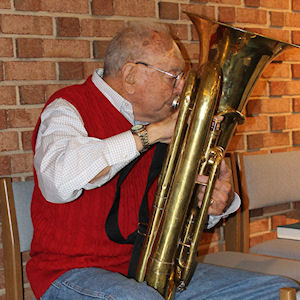
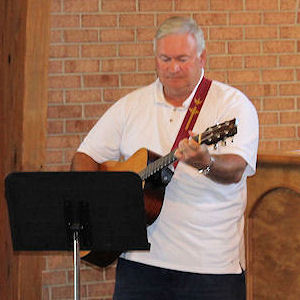
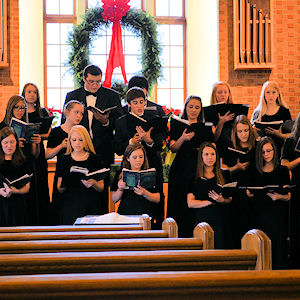



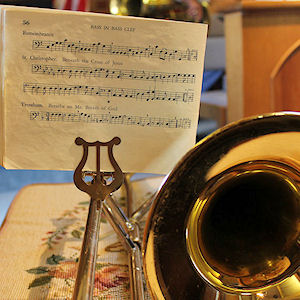

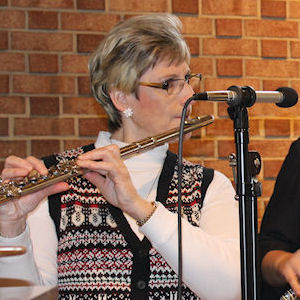





|
For the Moravians, music has always been considered as a
necessity of life, not as a cultural veneer. Many Moravian
clergy and lay people in the eighteenth century were trained in
music by the same composers who influenced Mozart and Haydn;
thus they came to the New World fully conversant with the taste
and practice of European classicism. Instruments came to America early with the Moravians; by 1742, the Moravian settlement in Bethlehem (PA) had flutes, violins, violas da braccio, violas da gamba, and horns. These instruments were played not by “professionals” but by accomplished amateurs, who enjoyed orchestral and chamber music as well as accompanying vocal solos and anthems for worship. Of the music written by Moravian composers, by far the greater portion is what today is called “sacred” -- anthems and solos for liturgical use. However, they did copy and collect thousands of works, vocal and instrumental, by their contemporaries in Europe, for use in worship and in the life of the community. Continue Reading Here Moravian
Music Foundation -
Moravian Music Festival -
|
|
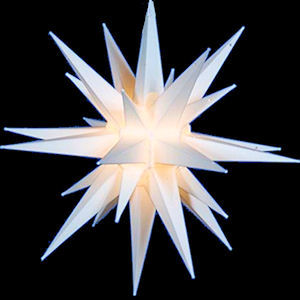 |
The Moravian Star Originating in the Moravian boarding schools in Germany in the nineteenth century as an exercise in geometry, the stars were carried throughout the world by missionaries and other church workers. Now, from the Himalayas to the Caribbean, the star proclaims the hope of Advent. While we are most familiar with the white star, the first star had alternating red and white points. Stars colors have also included red and yellow, white and yellow, and a yellow "starburst" with a red center. Whatever its form, the star reminds us of God, who caused the light to shine out of darkness and of the light which is the life of humanity. It reminds us of the promise of Abraham that his descendants would be more numerous than the stars; we are reminded of the star that pointed to the "great and heavenly light from Bethlehem's manger shining bright." The Light shines in the darkness, and the darkness has not overcome it. This is the message of the Advent Star, which also points to Jesus, who said, "I am the bright and Morning Star." It is the star of promise, the star of fulfillment, and the star of hope. |
| The Moravian Seal | The seal of the Moravian Church goes back to the
sixteenth century, possibly earlier. In the center is
the Lamb of God (Agnus Dei), a favorite symbol of the
early Christian Church. The Lamb who represents Jesus
Christ, holds a staff, and from the staff waves the
glorious banner
of victory. On the banner a cross is clearly displayed.
The uniqueness of the lamb symbol for Moravians is the
inscription attached (in a circular band): Vicit Agnus
Noster, Eum Sequamur, "Our Lamb Has Conquered,
Let Us Follow Him." The seal focuses on the triumph of
Christ over death, sin, and the power of evil through His sacrificial death. It combines faith in Christ with
active discipleship in following His path of love and
service.. The movement that was to become the Moravian Church was started in the 14th century by John Hus, a Catholic priest and rector of Charles University in Prague. Hus objected to some of the practices of the Roman Catholic Church: deliver liturgy in the language of the people (Czech, not Latin), having lay people receive communion in both kinds (bread and wine), married priests, and eliminating indulgences (payment to the church for forgiveness of sins) and the idea of Purgatory. In rejecting indulgences, John Huss can be said to have adopted a doctrine of justification by grace through faith alone; in doing so, the Moravians arguably became the first Protestant church. |
|
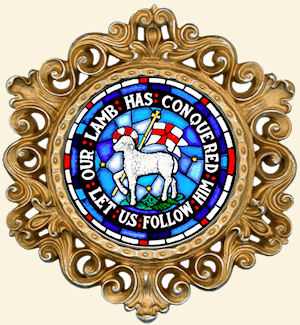 |
|
The Moravian Motto A Description of Moravian Principles.  |
In essentials, unity: Christ is the
one big essential. The reality of God’s love offered in
Christ is what our life of faith is all about. We don’t
understand or experience Christ in exactly the same way,
but it doesn’t matter. Our faith in Christ and our
commitments to live as his followers are what really
matter. Christ is the ground and source of our
unity. In non-essentials, liberty: The list of nonessentials is as big and wide as the heart of liberty. Here we go beyond mere tolerance to acceptance of diversity. We need to be able to say that it is not only okay to have variety of worship forms, musical selections, clergy styles, program offerings and service opportunities; it is good and healthy for the life of the church. Tolerance is too easy; acceptance is our real challenge. In all things, love: Love affirms our unity rather than our divisions. Love has the power to make of our differences no difference. We all know we have plenty of differences. We could spend a lot of time identifying and fighting with one another. But “In all things love” means the love that has the power to overcome our differences by refocusing our concern on all that we have in common. We believe we all have much more in common than we will ever have in difference. Love not only brings us together in God’s family but keeps us together as a community of faith. [J.E. Hutton: “Moravian Principles”] |
|
The Moravian Putz Please visit the Putz Room at New Hope Moravian Church this Christmas season and experience the true spirit of Christmas. 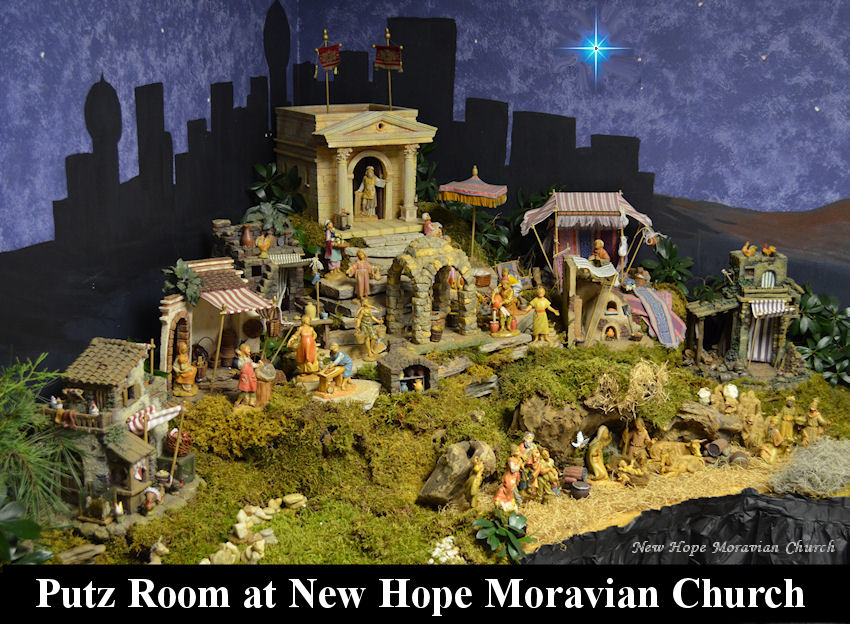 |
The word Putz comes from the German verb (PUTZEN)
which means "to dress-up, decorate or adorn". From the very
beginning the Putz was made from stumps, moss, greens,
rocks, paper and figures. Now the artful use of
electricity, computer chips, music and narration have added new
dimensions and effectiveness to the Christmas Putz.
Always one central theme remains -
the birth of Christ. A Putz is more than just a manger scene or crèche. It is a more elaborate presentation of the Nativity story which was developed many years ago to help children gain a better and more vivid appreciation of the story of Christmas. Thus it was an early effort on the part of the Moravians to use audio-visual techniques of teaching. Whether they are young or old, one who views a Putz finds new meaning in a story they may have heard countless times. In the hustle of the holiday season a pause to reflect upon the central event of Christmas with the help of a Putz is like a breath of fresh air which allows the true spirit of Christmas to enter anew into one's heart and soul. In addition, those who build a Putz find, in the fellowship together and in their creative expression, a true sense of participation in the work of the Lord. |
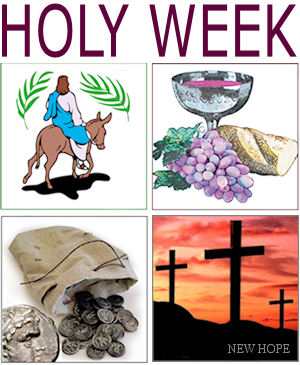 |
Holy Week, the week before Easter, often referred to
as "Passion Week" by Moravians is a full week of
profound reflection, reverence and prayer. The word
passion comes from the noun translation of the verb
pascho appearing in the gospels, where Jesus showed
“Himself alive after His passion by many infallible
proofs” (Acts 1:3). There, the word passion means “to suffer,”
particularly in reference to Christ’s sufferings and
death. We gather every evening of Holy Week to read out loud from a harmony of the gospels, beginning with Jesus’ entry into Jerusalem and ending with the burial. There is no sermon during Holy Week - just readings and congregational singing. A single hymn verse is sung in response to each passage from the Bible - and, sometimes - there is simply silence. On Maundy Thursday the Lord’s Supper follows the reading. This is the most significant communion of the year for the Moravian Church, as it is observed on the very night when our Lord instituted this most holy sacramental meal. We are there at His triumphal entry into Jerusalem; His cleansing of the temple; His sharing of bread with the betrayer; and His trial and crucifixion. We hear the messages He delivered and the instructions given to the twelve. We are there - sitting at the feet of Jesus. |
|
Moravian Easter Sunrise Service A Moravian Tradition for 280+ Years  “The Lord has risen!" "The Lord has risen indeed!” |
Since 1732, the Moravian Easter Sunrise
Service has been a powerful tradition passed down from
generation to generation, knitting together old and
young, the living and the dead, individual
congregations, and Moravians with the surrounding
community. Easter morning is an especially wondrous time. In the chilly pre-dawn morning, rain or shine, the faithful gather in front of the Church to await the glorious news. The pastor proclaims, “The Lord is risen!” The congregation responds, “The Lord is risen indeed!” After a brief service, the congregation reverently proceeds to the cemetery (God's Acre) while the band plays Easter chorales antiphonally. The liturgy is completed at the cemetery with the congregation greeting the rising sun in their God’s Acre, with hymns, horns and a resounding, “The Lord has risen… The Lord has risen indeed!” Breakfast is served in the fellowship hall here at New Hope Moravian Church upon completion of our Sunrise Service - compliments of our Men's Fellowship. Visitors are encouraged to attend this beautiful service and share our delicious breakfast. |
|
The Moravian Daily Text Source: Moravian Church in North America |
The first printed edition of the
Daily Texts (Losungen) was published in Herrnhut,
Saxony, in 1731. The title page of that edition
quoted the passage from Lamentations and promised a
daily message from God that would be new every
morning. It was an outgrowth of a spiritual renewal
of the Moravian Church (Unitas Fratrum) that dated
from August 13, 1727. In 1722 refugees from Bohemia and Moravia began arriving at the estate of Count Nicholas von Zinzendorf. (1700-1760), where he gave them a welcome and land on which to establish the settlement of Herrnhut. (The name Herrnhut means "under the Lord´s protection" or "under the Lord's watch".) Each day the settlers came together
for morning and evening devotions, consciously
placing their lives in the context of God’s Word. On
May 3, 1728, during the evening service, Count
Zinzendorf gave the congregation a “watchword” for
the next day. It was to be a “Losung”
(watchword) to accompany them through the whole day. |
||
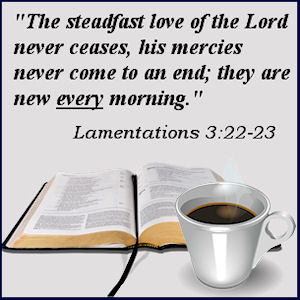
|
|
You are always
welcome at New Hope Moravian Church New Hope Moravian Church is an inclusive community of God’s people which assembles for worship, education, and fellowship. Our members are committed to meeting the needs of the community and nurturing individuals on their spiritual journeys as we honor Jesus Christ. To many, the term [Moravian] denotes ancestry. To Moravians, the term defines Christianity. Few are direct descendants - all are spiritual descendants of the ancient Brethren. We come from all nationalities, all races, all religious backgrounds, and many walks of life to devote our life to Christ. The Moravian Church practices open communion, which means members of all Christian Churches are invited to share the bread and the Cup of Holy Communion. You need not be a member to participate in any of our special services whether it be our Lovefeast, Candlelight or Easter Sunrise Service. We seek to welcome and serve all who wish to be involved. We sincerely hope this web page has given you greater understanding of our Moravian Christian faith; our history, customs and traditions. Wherever you are on your faith journey, you are always welcome here at New Hope Moravian Church. |
 |

Centrally located
in Catawba County on Sandy
Ford Road between Startown and Robinson Roads,
east of Catawba Country Club, New Hope Moravian
Church is only 7 miles from the center of
Hickory, 6 miles from Conover, and just 6 miles
from Newton. Please take the time to make the
drive and join us this Sunday morning at 10:00
AM as we worship our Lord and Savior, Jesus
Christ.
|
|
| Go to: Top of This Page - Next Page | ||
| ~ You are always welcome at New Hope Moravian Church ~ | ||
| This page is linked to external web content. Please report broken links to the webmaster. | ||
